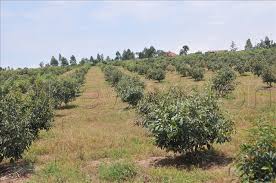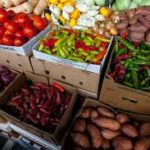Hass avocado farming has grown into one of the most profitable agribusiness ventures in Kenya. With high demand locally and internationally—particularly in Europe—Kenyan farmers are reaping significant returns from this crop. This guide provides all the essential information you need to succeed in Hass avocado farming, from growing requirements to farm management and market opportunities.
Hass Avocado Growing Regions in Kenya
Hass avocados thrive in several regions across the country, thanks to Kenya’s favorable climate and diverse agro-ecological zones. The key growing areas include:
- Central Region: Murang’a, Kiambu, Nyeri
- Rift Valley: Nakuru, Eldoret, Kajiado
- Eastern: Meru, Makueni, Machakos, Kitui
- Nyanza: Kisii, Migori
- Western: Kakamega, Vihiga
These areas meet the climate and soil conditions necessary for Hass avocado cultivation, ensuring high yields. However, you do not have to be in these areas to start planting, if you have sufficient water and manure, you can make your land ideal.
Ecological Requirements for Hass Avocado Farming
For optimal growth, Hass avocado trees require:
- Rainfall: 1000-2000mm per year, well-distributed
- Temperature: 20-24°C
- Soil: Well-drained sandy or alluvial loam soil
- Soil pH: Between 5.5 and 6.5
Planting Process
Hass avocado can be grown from seeds or grafted seedlings, but seedlings are preferred due to faster maturity and higher yields. Planting should ideally occur at the onset of the rainy season.
Steps for Planting
- Prepare planting holes: Each hole should measure 60cm x 70cm.
- Separate soil layers: Set aside the topsoil and mix it with organic farmyard manure (20 kg) and 250g of double superphosphate.
- Insert seedlings: Place the seedlings into the hole and cover with soil.
- Watering: Water immediately after planting to ensure adequate moisture.
Maturity Period: Hass avocado trees start bearing fruit after 3-4 years, with each tree producing an average of 70-100 kg of fruit annually.
Farm Management Practices for Maximum Yields
To achieve optimal yields and ensure healthy plants, the following management practices are crucial:
1. Pruning
- Prune the trees before flowering and after harvesting to improve yields and tree structure. Pruning ensures proper air circulation and sunlight penetration.
2. Thinning
- Remove excess fruits to reduce competition for nutrients. Thinning improves the quality of the remaining fruits.
3. Weeding
- Regular weeding prevents competition for water and nutrients, promoting healthy tree growth. Use mulching to suppress weeds and retain soil moisture.
Pest and Disease Management
Like other crops, Hass avocado trees are prone to certain pests and diseases that can affect yield.
Common Pests
- Thrips
- Scale insects
- False codling moths
Control: Maintain field hygiene and use organic or chemical pest control measures where necessary.
Common Diseases
- Cercospora fruit spot
- Scab
- Anthracnose
- Root rot
Control: Apply mancozeb and copper-based fungicides to manage diseases. Ensuring good drainage also reduces the risk of root rot.
Harvesting Hass Avocados
Hass avocado trees begin bearing fruit 3-4 years after planting. A mature tree produces between 70-100 kg of fruit annually.
Tips for Harvesting
- Harvest fruits when they are mature but still firm, as they ripen off the tree.
- Handle with care to avoid bruising, which can lower market value.
Hass Avocado Market Opportunities in Kenya
Hass avocados have a dual market—local and international—allowing farmers to diversify their sales:
1. Local Market
Locally, Hass avocados are sold in open-air markets, supermarkets, groceries, and roadside stalls. A single fruit is priced between Ksh 10 and Ksh 50, depending on size and location.
2. Export Market
Kenya’s export market for Hass avocados is thriving, with key markets in Europe, the Middle East, and Asia. Export companies like Kakuzi, Sunripe, Vegpro, and East Africa Growers source avocados from local farmers for distribution abroad. Kenya has also received increased market access to China and is exploring further exports to the United States.
Why Hass Avocado Farming Is Profitable in Kenya
- High Demand: The global demand for Hass avocados has been growing steadily, making it a profitable export crop.
- All-Season Production: With proper farm management, farmers can extend the harvesting season, providing consistent income throughout the year.
- Value Addition: Farmers can explore value addition through processing avocados into oil or skincare products, increasing profitability.
- Government Support: Kenya’s government has been actively promoting avocado farming, offering training and certification to meet export standards.
Challenges in Hass Avocado Farming
- Pests and Diseases: Managing pests like thrips and diseases such as anthracnose can be costly.
- Export Standards: Farmers must adhere to strict quality and pesticide residue limits to access international markets.
- Unpredictable Weather: Climate change poses challenges, such as erratic rainfall and temperature fluctuations, which can affect yields.
Unlocking the Potential of Hass Avocado Farming in Kenya
Hass avocado farming is a lucrative agribusiness with great potential for Kenyan farmers. With increasing local and international demand, especially in Europe and Asia, farmers can achieve high returns by adhering to good agricultural practices and targeting both local and export markets.
By investing in quality farm management, pest control, and efficient marketing strategies, farmers can unlock the full potential of this crop. As the global appetite for avocados continues to rise, Kenya’s position as a major exporter makes Hass avocado farming a smart investment for both smallholders and commercial farmers.
Thinking of starting a Hass avocado farm? Now is the perfect time to tap into this growing market and enjoy the fruits of your labor.





